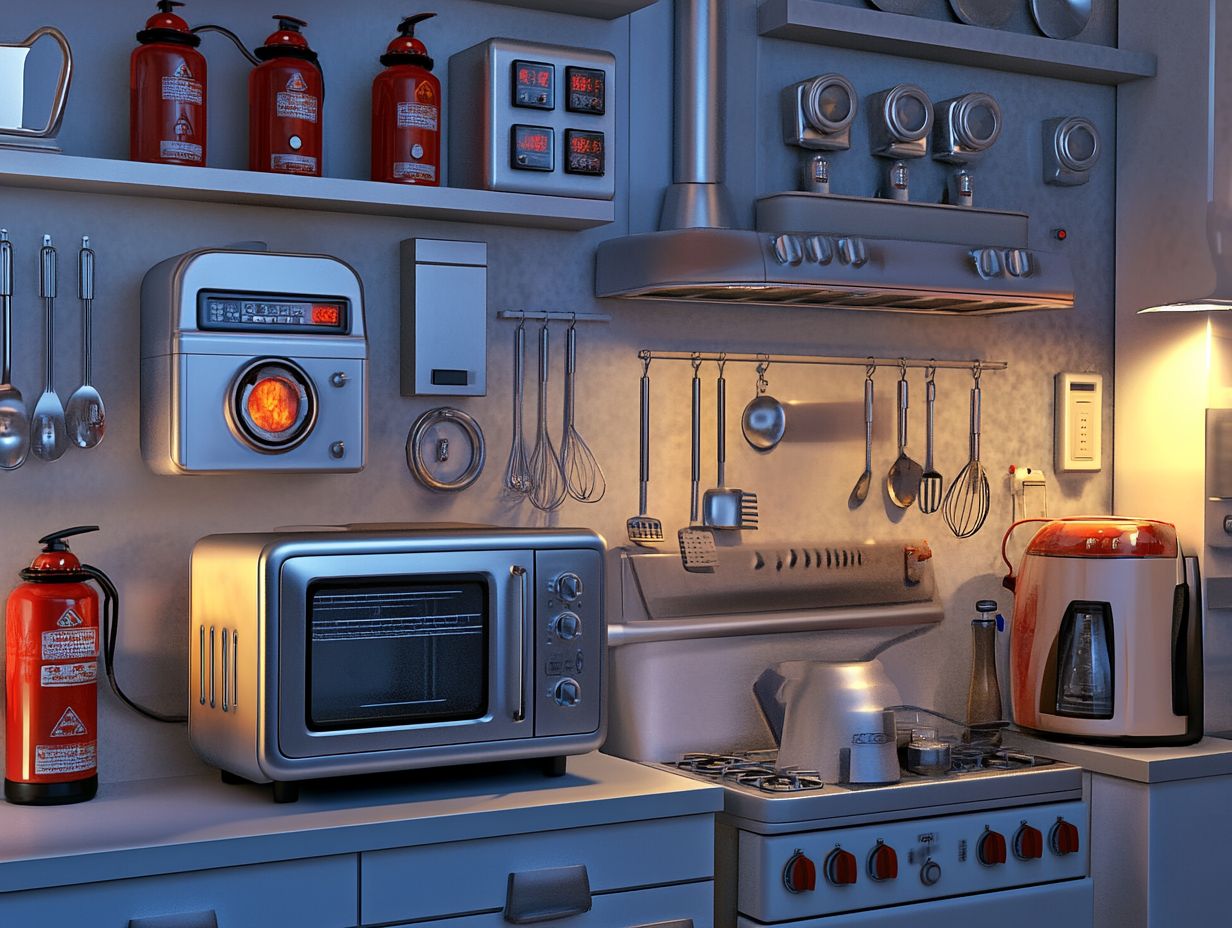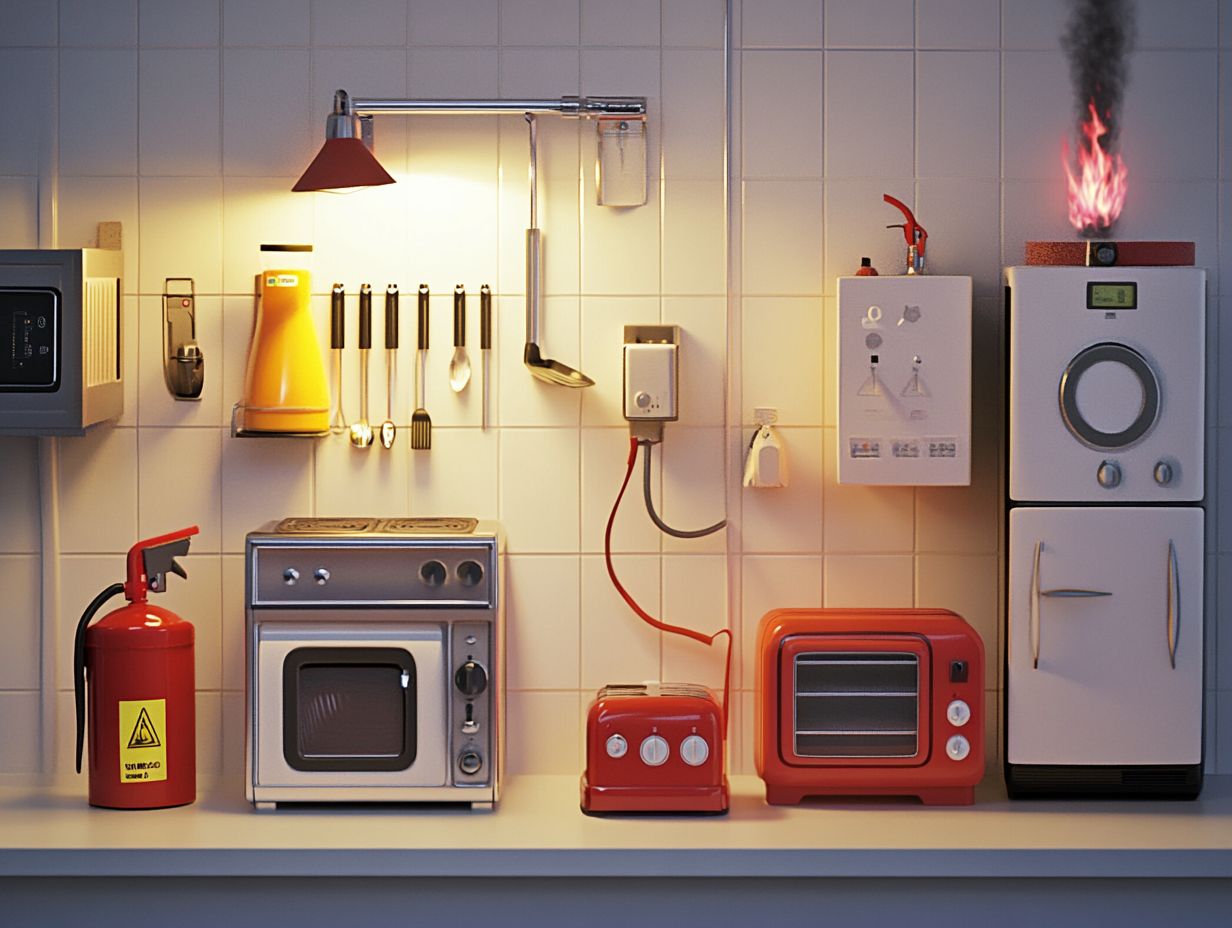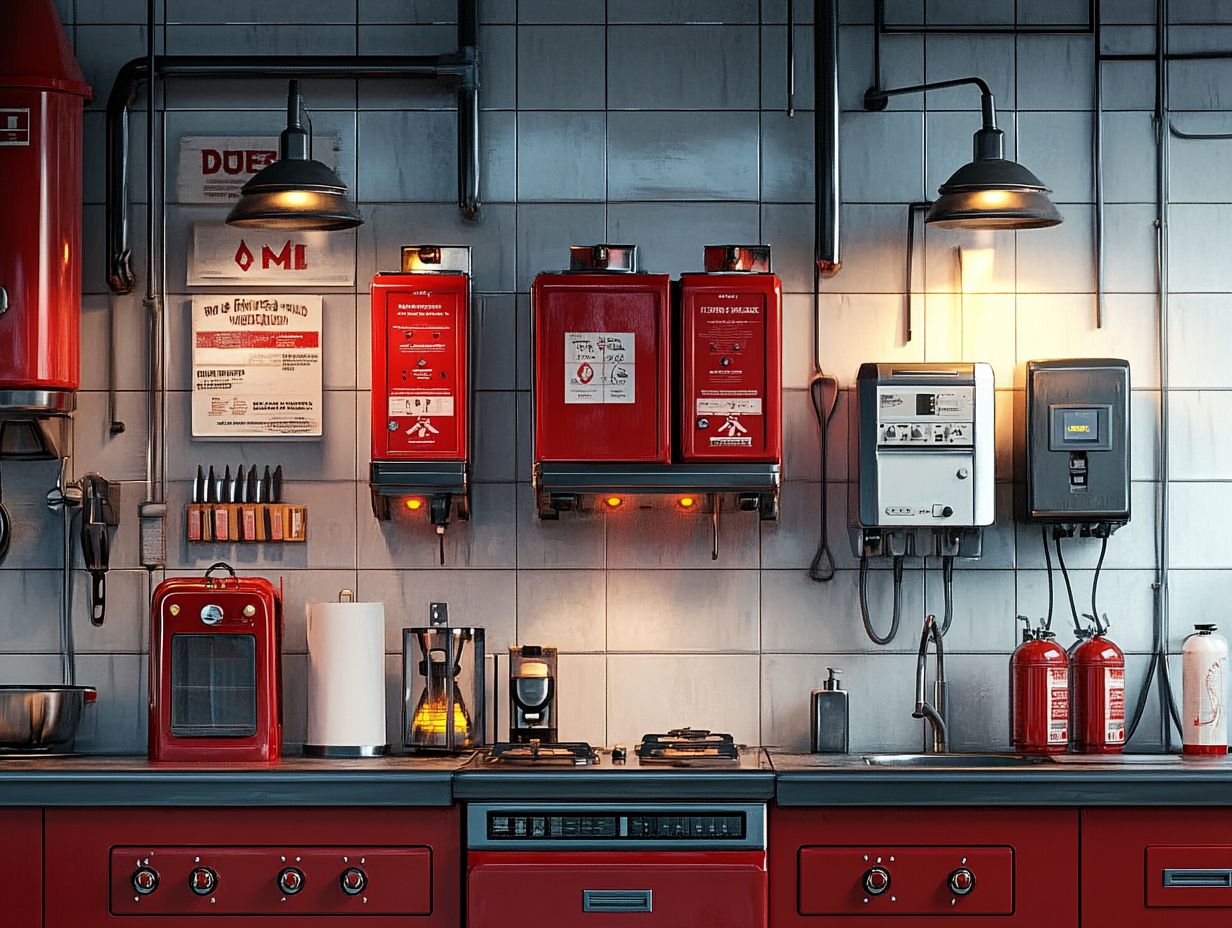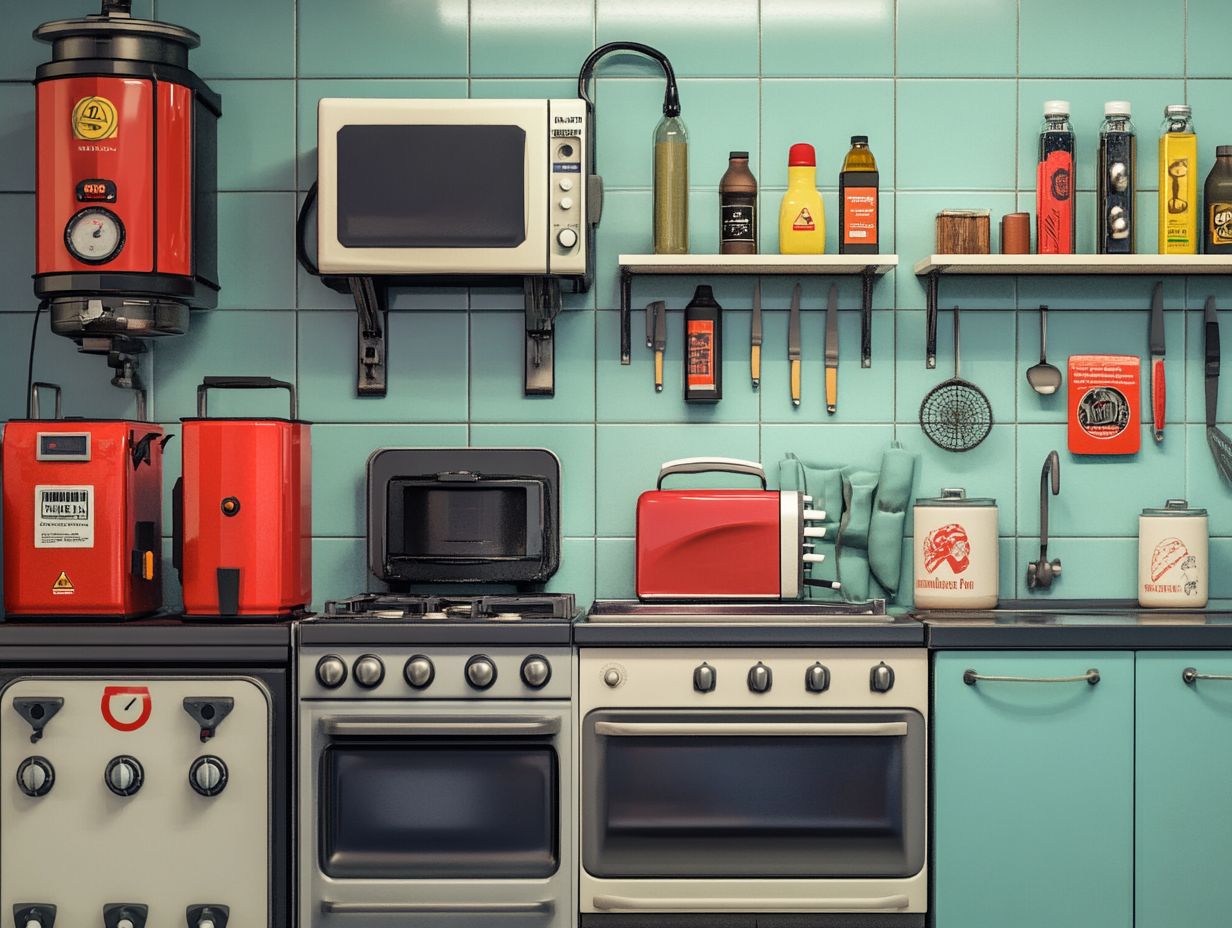In our increasingly appliance-driven lives, it is essential to understand appliance safety to protect ourselves and our homes. Various factors, such as electrical malfunctions and improper maintenance, can lead to appliance-related fires and other hazards.
This article aims to explore the common causes of these risks and highlight practical strategies for prevention.
These strategies include regular inspections and best practices for safe usage. By gaining insight into potential hazards and emergency preparedness, individuals can foster a safer environment for themselves and their loved ones.
Understanding Appliance Safety

Understanding appliance safety is essential for every homeowner, as it includes the practices and guidelines that promote the safe operation and longevity of household appliances. This topic spans various aspects, from fire prevention to recognizing electrical hazards, all of which can significantly minimize risks.
Regular maintenance checks, following user manuals, and staying informed about the age of appliances are crucial for ensuring they function safely and efficiently. In modern homes, where reliance on numerous electrical devices is common, grasping these principles can help prevent accidents and foster a safe living environment.
What is Appliance Safety?
Appliance safety encompasses a range of practices and standards designed to ensure that household appliances are used and maintained in a manner that reduces the risk of accidents and injuries.
Recognizing the importance of appliance safety goes beyond simply complying with regulations; it involves the implementation of comprehensive risk management strategies that protect users and their homes. Following established safety protocols, such as ensuring proper installation, conducting regular maintenance checks, and adhering to operational guidelines, can significantly reduce potential hazards.
Users are encouraged to become familiar with relevant safety certifications, which indicate that appliances meet critical safety standards. Additionally, staying informed about product recalls and safety alerts can enhance protection against incidents, enableing individuals to make informed choices regarding their kitchen and household equipment.
Common Causes of Appliance-Related Fires
Common causes of appliance-related fires are frequently linked to electrical hazards, improper use and maintenance of household appliances, or even overload due to excessive electrical load. Understanding these risks is crucial for preventing fires and ensuring safety at home.
Appliances that are not regularly inspected tend to be more susceptible to malfunction, and using appliances incorrectly can lead to dangerous fire hazards. By identifying these common issues, homeowners can take proactive steps to protect their homes and loved ones.
Electrical Malfunctions
Electrical malfunctions pose significant fire hazards in homes, often arising from issues such as faulty wiring, overloaded circuits, or ineffective use of circuit breakers and surge protectors.
These problems can develop without notice, leading to damage that jeopardizes the safety of residents. The consequences can vary widely, from the loss of equipment to severe property damage.
Regular inspections of household appliances serve as an essential preventive measure, allowing homeowners to detect signs of wear and tear or malfunction before they escalate. It is advisable for homeowners to ensure their circuit breakers are accurately labeled and to refrain from resetting them repeatedly, as this may indicate a more serious underlying issue.
Furthermore, using surge protectors correctly, especially for sensitive electronics, can provide an additional layer of protection against unexpected power surges.
Improper Use or Maintenance

Improper use or maintenance of appliances is a leading cause of accidents, as many homeowners often overlook essential safety tips and operating guidelines necessary for safe appliance usage.
Statistics indicate that nearly 50,000 home fires occur each year due to improper appliance operation, leading to devastating losses and endangering lives. A significant percentage of these incidents arise because users neglect basic maintenance or fail to grasp their equipment's capacity and limitations. It is crucial for individuals to read manuals thoroughly, as doing so can greatly minimize risks. Familiarizing oneself with all safety features and recommended practices is vital.
Regular inspections and proper maintenance not only extend the lifespan of appliances but also reduce the likelihood of malfunctions, ultimately ensuring that families remain safe and secure in their homes.
Preventing Appliance-Related Fires
Preventing appliance-related fires involves a range of preventive measures. This includes regular maintenance of appliances, conducting safety checks, and following established fire safety practices.
By taking these steps, individuals can significantly reduce the risks associated with fires in the home.
Regular Maintenance and Inspections
Regular maintenance and inspections of household appliances are essential for ensuring they function properly and last longer, all while minimizing the risk of fire hazards and electrical failures.
By being proactive, homeowners can spot potential issues early and resolve them before they turn into expensive repairs. Inspections should involve checking for frayed cords, leaks, and any buildup of lint or debris, particularly in appliances like dryers and refrigerators.
Establishing a routine maintenance schedule can enhance performance and efficiency, ultimately leading to savings on energy bills. It's also important to follow the safety labels and user manuals that come with appliances, as they offer valuable guidelines for maintenance and safe operation. This not only protects your home but also ensures that your appliances operate at their best.
Proper Use and Storage
Proper use and storage of appliances are essential for preventing accidents and ensuring efficiency. Incorrect placement or usage can increase risks and potentially create fire hazards.
To enhance safety and improve energy efficiency, it is important to adhere to best practices when positioning appliances in the home. For example, maintaining a minimum distance between heat-producing devices and combustible materials can significantly reduce the risk of fire. Additionally, ensuring that appliances are well-ventilated helps maintain optimal operating temperatures, which can ultimately extend their lifespan.
Regular maintenance checks, such as cleaning dust from vents, are also crucial for promoting efficiency. Furthermore, storing frequently used items within easy reach of appliances can help minimize accidents and improve workflow, creating a safer and more organized kitchen environment.
Electrical Hazards and Appliance Safety

Electrical hazards present considerable risks to the safety of appliances. It is crucial for homeowners to conduct thorough risk assessments and follow established safety standards to reduce these dangers effectively.
Identifying Potential Hazards
Identifying potential hazards related to appliances requires conducting regular safety checks and monitoring for signs that electrical maintenance is needed.
By remaining vigilant and routinely inspecting appliances for unusual behavior—such as sparking, strange noises, or overheating—one can detect issues before they escalate into dangerous situations. It is important to pay attention to frayed cords, as they indicate wear and tear, and to observe any inconsistencies in appliance performance.
Adopting a proactive mindset establishes a safer environment; scheduling periodic professional assessments allows individuals to catch early warning signs that may otherwise go unnoticed. This approach significantly reduces the risk of accidents and provides peace of mind.
Preventive Measures
Implementing preventive measures is an effective strategy to mitigate risks associated with appliance usage and ensure compliance with established safety protocols.
Homeowners can take several proactive steps, such as:
- Installing smoke detectors in key areas of the home to provide early warnings in the event of a fire.
- Keeping a fire extinguisher readily available and understanding how to use it can significantly reduce the risk of disaster.
- It is also essential to regularly test these safety devices and replace batteries as needed to maintain their effectiveness.
Familiarizing oneself with local safety regulations and guidelines enables homeowners, increasing their awareness of potential hazards and the tools available for safeguarding their households. By fostering a culture of safety, they not only protect their property but also ensure the well-being of their loved ones.
Other Risks Associated with Appliances
Plus fire hazards, there are various risks linked to appliances that should not be overlooked. These include the possibility of chemical and gas leaks, along with potential physical injuries that may arise if proper safety measures are not adhered to.
It’s important to remain vigilant and follow safety protocols to mitigate these risks.
Chemical and Gas Leaks

Chemical and gas leaks pose significant risks associated with household appliances, and it is essential for homeowners to recognize the signs and be prepared to respond swiftly in an emergency.
Common sources of these leaks include stoves, water heaters, and refrigerators, which may develop issues as they age. Homeowners should make it a practice to regularly inspect these appliances for any unusual odors, unexpected hissing sounds, or damp spots that could indicate a leak.
It is crucial to install detectors for carbon monoxide and natural gas to act as an early warning system. Additionally, having an emergency preparedness plan that outlines designated meeting points and contact numbers can make a vital difference. This ensures that all family members know what actions to take and where to go in the event of an emergency.
Physical Injuries
Physical injuries can occur from the incorrect use of appliances, highlighting the need for safety precautions and child safety measures in households with young children.
It's important to recognize that many accidents arise from the misuse or lack of awareness regarding household devices, which underscores the significance of education and precautionary practices. A thoughtful approach includes teaching children about the potential dangers associated with appliances like toasters, ovens, and microwaves, ensuring they understand what is safe and what is not.
Supervising children during any activities involving these appliances can greatly reduce the likelihood of accidents. Parents should establish clear boundaries in areas such as kitchens and laundry rooms, creating safe zones where children are kept from entering without supervision.
Additionally, regularly inspecting appliances for defects and maintaining them properly can play a crucial role in preventing injuries.
Tips for Ensuring Appliance Safety
Ensuring appliance safety requires homeowners to follow important tips and safety reminders. These guidelines not only help in operating appliances safely and efficiently but also emphasize the importance of performing necessary maintenance checks.
Best Practices for Safe Appliance Use
Best practices for safe appliance use involve a thorough understanding of the operating guidelines outlined in user manuals, along with regular cleaning and maintenance of the appliances.
This knowledge not only enhances performance but also significantly minimizes potential risks linked to malfunctioning equipment. For example, when using kitchen appliances such as blenders or microwaves, it is essential to unplug them after use, especially prior to cleaning. Regular maintenance tasks might include descaling kettles or checking the seals on refrigerators to enhance energy efficiency.
- Using non-abrasive cleaners for surfaces is advisable to prevent damage.
- It is important to keep appliances away from moisture to avoid electrical hazards.
- Routine inspections for any signs of wear or tear should be performed to ensure safety.
Emergency Preparedness
Emergency preparedness is an essential component of appliance safety, providing homeowners with the necessary plans and safety equipment to respond effectively to emergencies.
By establishing a clear fire escape plan and regularly reviewing it with family members, individuals can ensure that everyone knows how to act swiftly in the event of a fire. Familiarizing oneself with key safety equipment, such as fire extinguishers and smoke detectors, not only enhances readiness but also offers peace of mind.
Additionally, understanding the role of homeowners insurance can be invaluable; it serves as a financial safety net, helping to mitigate losses in the event of a fire or other catastrophe. This comprehensive approach to safety prepares homeowners to protect their loved ones and property efficiently, illustrating that being proactive is indeed essential.



